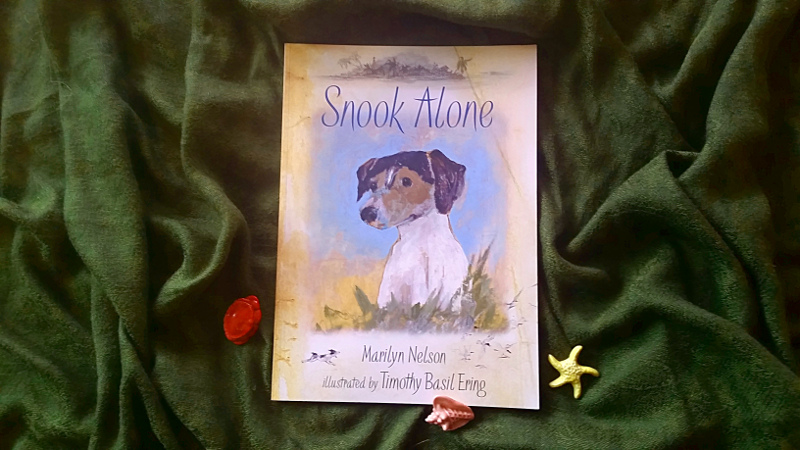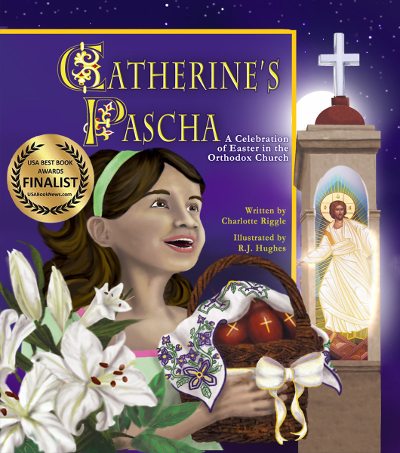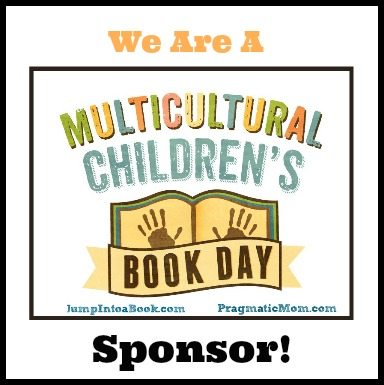Snook Alone has a lot of words. Unusual words. Beautiful words. Evocative words. Words of longing. Words that sigh. Words that slip between prose and poetry and back again. Words as soft as prayer, as haunting as the sea.
I adore the words. All the words. Because of the words, Snook Alone could have been one of my favorite books ever. Not just one of my favorite picture books, but one of my favorite books.
And Snook – he’s a rat terrier, He’s “a black-on-white bundle of intelligent energy with brown cheeks and eyebrows and black floppy ears.” In the words and in the illustrations, he’s an incredibly endearing dog. He’s one of the doggiest dogs I’ve ever met in a book. And he loves his human, Abba Jacob, with every fiber of his being.
I adore Snook. Even if the words weren’t as wonderful as they are, Snook would almost be enough to make Snook Alone one of my favorite picture books ever. He’s wonderful and intriguing. And he grows through the book, and becomes more than he is.
So why don’t I love Snook Alone more than I do?
What’s up with Abba Jacob?
Abba Jacob is Snook’s human. He’s a monk, a hermit. He lives on a remote island, part of St. Brandon’s Atoll. He spends his time in silence, working and praying, praying and working. He grows sugar cane, papayas, mangoes, guavas, and breadfruit. He works on the plumbing and wiring of the hermitage. Sometimes guests come to visit. He sweeps the guesthouse and scrubs the toilets.
Whatever he does, Snook is right there with him.
And when he gets into his old car and drives to town, Snook waits for him at the hermitage. He knows his human will be back.
Abba Jacob, in Marilyn Nelson’s poetic text, is an interesting, appealing character. The central conflict of the story (we’ll get to that) arises when he’s asked to help with a scientific expedition. He’s helping catalog all the plant and animal species on every island in the atoll.
This man is capable, strong, and intelligent. And for some reason, illustrator Timothy Basil Ering draws him as a cartoon.
A cartoon monk?
Now, that might have been okay, had all the illustrations in Snook Alone been cartoonish. But Snook and the sea and the sand and all the world are real and solid. Even Abba Jacob’s old beat-up car is real and solid. Only Abba Jacob himself is a cartoon.
He’s got an oversized head, spindly arms and legs, and he wears a toga.
A toga. Seriously.
In Nelson’s words, we’re told, “Sometimes Abba Jacob washed his hands, pulled a long white tunic over his shirt and trousers, buckled on a worn brown leather belt, got into his battered old car, and drove away.”
I can’t imagine Ering reading this and thinking, “I know, I’ll take this old guy out of his modern clothes, and put him in a toga!” Men haven’t worn togas for over a thousand years. Even when men wore them, they weren’t everyday clothes. You couldn’t wear them to clean a toilet or climb a tree.
But maybe Ering didn’t know that. And maybe he had never met a monk in his entire life. Maybe he had no way to know what monks wear. But all he had to do was read story he was illustrating to know how to dress Abba Jacob.
And it’s not just the weird choice of clothing. The cartoonish Abba doesn’t fit in the rich, realistic world that Snook lives in. He’s an anomaly.
How much better and more compelling the book would have been, had Abba looked as real as the dog.
A story of loss and longing and love
The weird illustrations don’t prevent Snook Alone from being a truly wonderful story. When Abba Jacob heads out on the expedition through the islands of St. Brandon’s Atoll, Snook goes along. He can’t stand to be away from his beloved human. Besides, the boat ride is fun. And he gets to catch rats and mice on all the islands!
But while they’re on one of the islands, a storm comes up. Abba Jacob and his fellow researchers have to leave the island and find shelter. Abba Jacob calls Snook. But “the wind snatched Abba Jacob’s voice; the waves muted his whistle.” The men leave without Snook.
Snook is a smart and resourceful dog. With his human has gone, and the storm raging, he finds shelter for the night.
“In the morning, there were only faint sips of his friend’s scent left for Snook to drink in here and there. He sat on the beach, watching a band of clear sky fill with streaming light.”
Day after day, he waited. Day after day, he foraged, he slept, and he kept watch.
And in the island’s silence, and the waiting, and the waves, and the wind, he heard the hermit’s silence. In his longing, he felt the hermit’s love. And how could that love not bring Abba Jacob back to him?
I can’t read the story without tears. It’s a gloriously happy ending.
And I can’t read it without wishing that Ering’s Abba Jacob looked as real as his beloved Snook.
What about the children?
Of course, the things that bother grownups in a story don’t always bother children. As much as I’m disappointed by Abba Jacob, I’m not sure that a child will feel the same way. Even other grownups might see Abba Jacob differently. I was surprised, when I was searching for an article or interview with Ering that might explain his choices, I discovered reviewers who found the cartoon monk endearing, or thought that he provided necessary lightness to a story that might otherwise seem dark or scary.
It doesn’t work for me. But there is so much to love about this book. I want to love it.
The words are beautiful. The story itself is compelling and rich. And it’s a joy having a picture book that shows a monk’s simple life of work and prayer.
Perhaps that’s enough.
Read More
The White Cat and the Monk: A Review: This gorgeous book is a retelling of Pangur Bán, a poem written over a thousand years ago by an Irish monk who missed his cat.
17 essential picture books for Orthodox Christian kids: If you’re looking for picture books that include stories about Orthodox Christian people and traditions, you’ll find them on this list.
After the Fall: A book about healing from fear: This gorgeous and compelling picture book tells what comes after Humpty Dumpty’s fall. The author wrote it as a love story for his wife. And you need to read it.
Buy the Books!

These delightful books will diversify your bookshelves with disability representation. Elizabeth, one of the main characters, is an ambulatory wheelchair user.
Catherine’s Pascha
FINALIST IN THE 2015 USA BEST BOOK AWARDS
Catherine doesn’t like vegetables. She doesn’t like naps. She doesn’t like it when her mom combs her hair. She loves hot dogs, chocolate cake, and her best friend, Elizabeth. Most of all, she loves Pascha! Pascha, the Orthodox Christian Easter, is celebrated in the middle of the night, with processions and candles and bells and singing. And Catherine insists that she’s not a bit sleepy.
Celebrate the joy of Pascha through the magic of a book: Catherine’s Pascha. Available on Amazon, Bookshop.org, and my webstore.
The Saint Nicholas Day Snow
Shoes or stockings? Horse or sleigh? Does St. Nicholas visit on December 6 or on Christmas Eve? Will a little girl’s prayer be answered? When Elizabeth has to stay at Catherine’s house, she’s worried about her grandmother, and worried that St. Nicholas won’t find her. The grownups, though, are worried about snow.
Celebrate the wonder of St. Nicholas Day through the magic of a book: The Saint Nicholas Day Snow. Available on Amazon, Bookshop.org, or my webstore.



